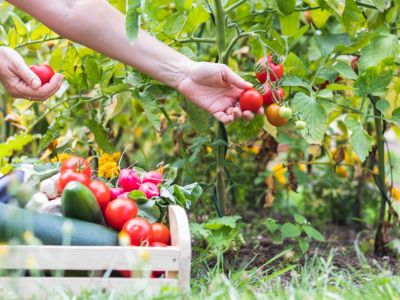As plants get settled into summer, June garden tasks are many and varied. Read on for a regional to do list as well as tips for western gardening in June.
Western Gardening in June
June garden tasks in the West range from harvesting to planting to protecting your garden. While there may be regional differences, most gardeners on the west coast will have the same basic list. Let’s start with strawberries, one of the tastiest fruits coming ripe in summer. June-bearing varieties of strawberries like ‘Chandler’ and ‘Sequoia’ ripen and are ready to harvest now. They are sweetest when you let them get fully red in the garden. Tuck bark mulch around the producing plants to keep those berries clean.
Planting Gardens on the West Coast
If you are a western gardener who neglected to plant strawberries, you still can. Strawberry plants don’t have to have their own section of the garden, just tuck them around the borders for easy picking. However, don’t expect a huge crop the first year. But that’s just the beginning of planting possibilities for your regional to-do list. You can still plant most summer crops in June if you act quickly. Put garden favorites like peppers, tomatoes, sweet corn and squashes in beds that get at least four hours a day of direct sunshine. It’s also fun to put in a container herb garden, planting all of the herbs you use in cooking plus a few new ones you’d like to try.
June Garden Tasks
While planting is almost as fun as harvesting, there are other June garden tasks you need to keep in mind. These include measures that protect your plants or your harvest. You can mulch your veggie garden to keep weeds down and hold moisture in the soil. Layer straw thickly between the plants. Protect fruits ripening this month (like plums and peaches) from hungry birds and squirrels by covering branches or trees with bird netting. Then harvest as they ripen and clean up any rotting fruits to keep rodents at bay. At the same time, check your fruit trees regularly for pests and diseases. Fertilizing your garden plants makes them stronger. Use organic fertilizer to feed fruit trees, following the directions on the label. Use liquid or organic vegetable fertilizer for your garden plants too.
